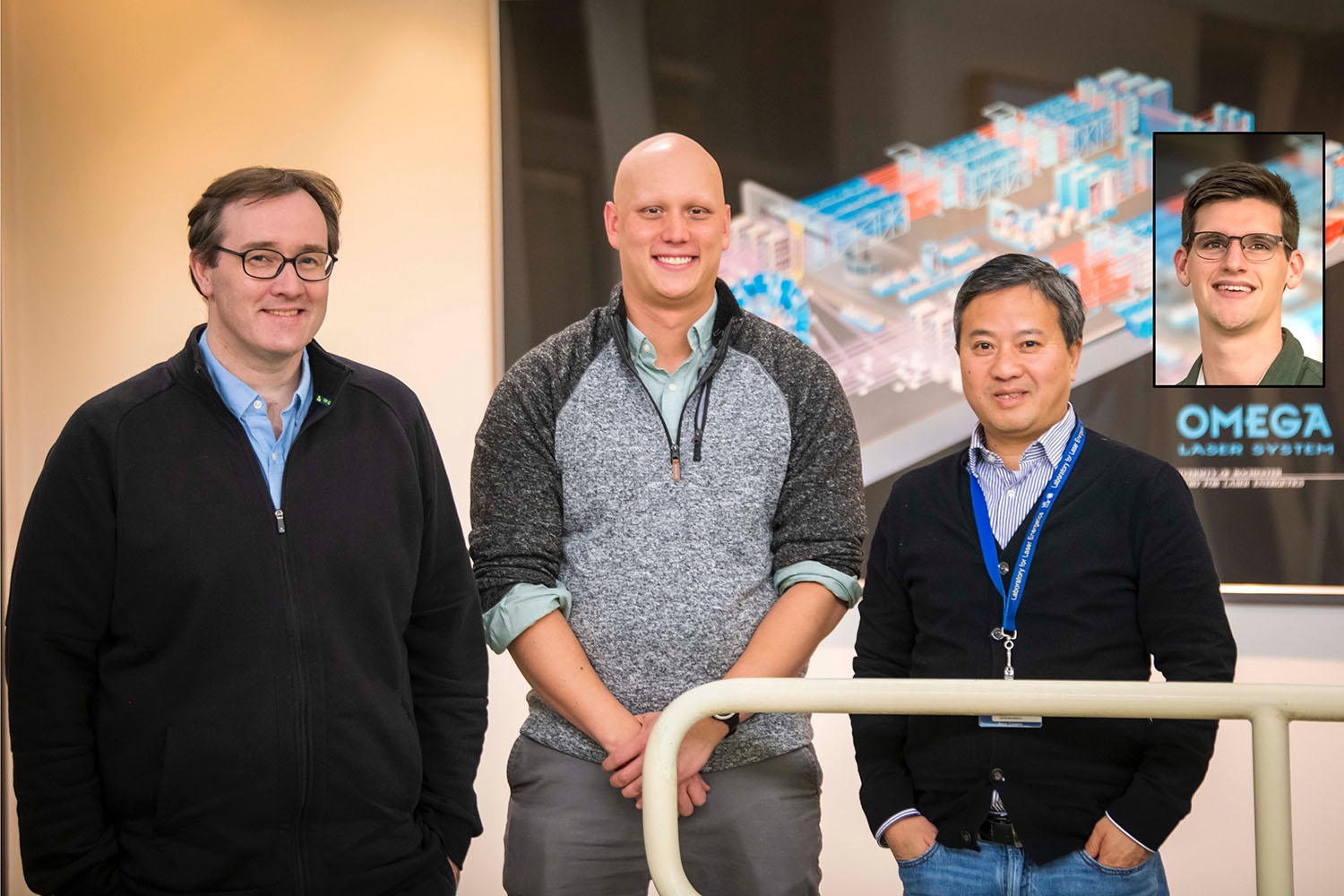
(left to right) Philip Nilson, Senior Scientist in LLE's Laser–Plasma Interaction group; graduate student Alex Chin; Suxing Hu, Distinguished Scientist and Group Leader of the High-Energy-Density Physics Theory group at LLE and an Associate Professor of mechanical engineering; and graduate student David Bishel (inset) contributed to the research to better understand how dense plasmas emit or absorb radiation.
Joint theoretical and experimental x-ray spectroscopy research on how radiation is generated and transported in dense plasmas, led by Suxing Hu and Philip Nilson, provides new insight into the behavior of atoms at extreme conditions. This research is featured in a recent paper published in Nature Communications and on the University of Rochester website. The researchers used laser-driven implosions to investigate the behavior of atoms at several billion atmospheres—conditions similar to those found in stars and inertial fusion targets. The research shows the necessity and viability of modeling dense plasma environments with an approach based on density functional theory (DFT), rather than theories used in more-traditional plasma-physics models. These results directly inform the accuracy and future development of radiation generation and transport simulations used to describe stellar evolution and the design of inertial fusion targets.


